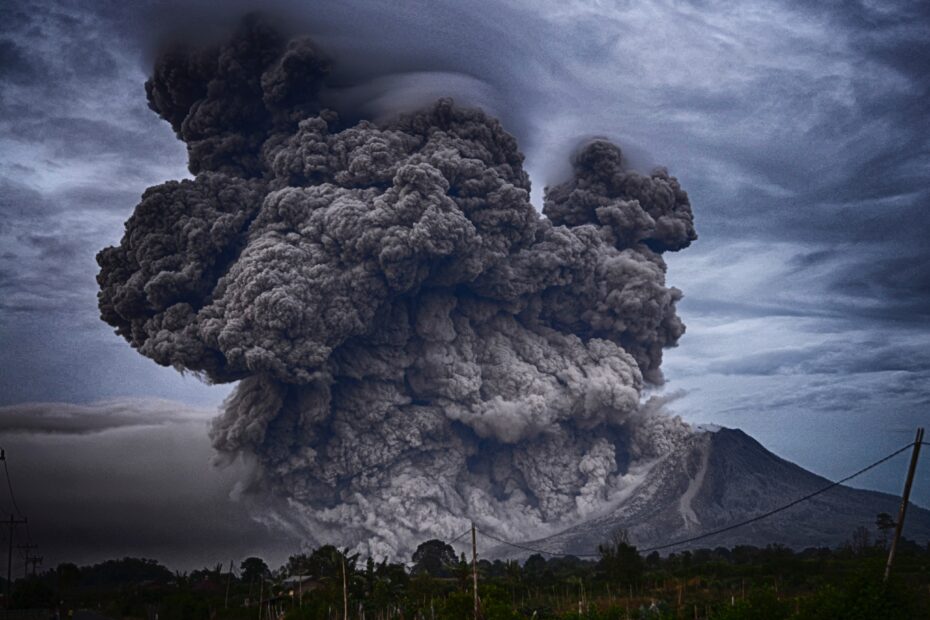Table of Contents
Different Types of Scales Are Used for Different Types of Hazards
Volcanic eruptions, earthquakes, hurricanes and tornadoes are all forces of nature that have had negative impacts on communities all over the world. In an effort to raise awareness and mitigate the hazards associated with these natural processes, scientists have created natural hazard scales. The size and type of a volcanic eruption is classified using the Volcanic Explosivity Index; the magnitude of an earthquake is classified using the Richter Scale; the size of a hurricane is classified using the Saffir-Simpson Scale; and the size of a tornado is classified using the Fujita Tornado Scale.
The Volcanic Explosivity Index
The Volcanic Explosivity Index, also referred to as VEI, was created by volcanologists Christopher Newhall and Stephen Self in 1982. In an article titled, “The Volcanic Explosivity Index (VEI) An Estimate of Explosive Magnitude for Historical Magnitude” published in the Journal of Geophysical Research, Newhall and Self introduced their scale to the world of volcanology as a way to classify the size of historical eruptions. Furthermore, the scale can be used to forecast the size of a volcano’s future eruptions based on the VEI magnitude of its historical eruptions.
The VEI scale ranges from a classification of 0 to 8. A VEI 0 eruption is the smallest kind of eruption and is considered a non-explosive eruption, such as the passively erupting volcanoes of Hawaii. A VEI 8 eruption is the biggest kind of eruption and is considered a mega-colossal eruption, such as the eruption of Toba Volcano 75,000 years ago.
The Richter Scale
The Richter magnitude Scale, or local magnitude scale, was developed in 1935 by seismologist Charles Richter as a way to mathematically calculate the magnitude of an earthquake. The Richter Scale uses information from seismographs, such as the amplitude of seismic waves, to assign a magnitude value. These values go from 0 to 10 and are expressed as whole numbers and decimals – the smaller the number, the smaller the magnitude of the earthquake. For example, earthquakes with a magnitude of 2.0 or less are usually called microquakes and cannot be felt by people. Earthquakes with a magnitude of 4.5 or greater can be felt by people in the region and can usually be recorded by seismographs all over the world.
The Saffir-Simpson Scale
The Saffir-Simpson Scale is used to assign an intensity to a hurricane, which is more often referred to as a “category”. Using the Saffir-Simpson Scale, meteorologists assign a category to a hurricane ranging from 1 to 5, with 5 being the most intense hurricane. This scale is used to give an estimate as to the potential wind speeds and storm surges that will accompany a hurricane. A category 1 hurricane usually has wind speeds of 74-95 miles per hour and storm surges of four to five feet above normal tide levels. A category 5 hurricane has wind speeds greater than 155 miles per hour and storm surges greater than 18 feet above normal tide levels.
The Fujita Tornado Scale
The Fujita Tornado Damage Scale was created by meteorologist Theodore Fujita in an attempt to classify and size and intensity of tornadoes based on the damage tornadoes cause to man-made structures. In 1971, Fujita wrote a paper titled, “Proposed Characterization of Tornadoes and Hurricanes by Area and Intensity” for the Satellite and Mesometeorology Research Project at the University of Chicago. In this paper, Fujita attempted to relate damaged structures to tornado wind speed. The scale values range from F0 to F5, with an F0 tornado causing light damage and an F5 tornado causing incredible damage.
